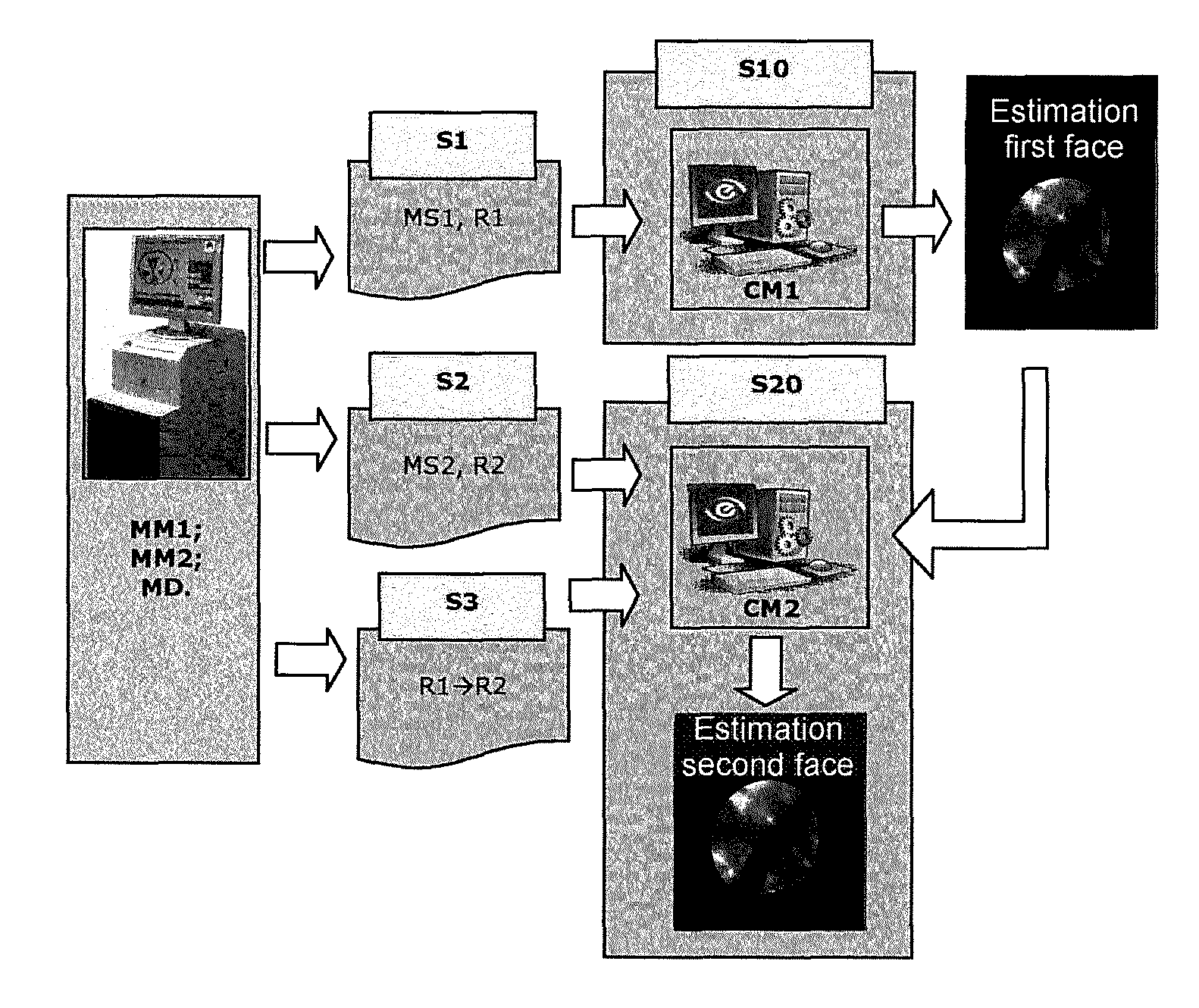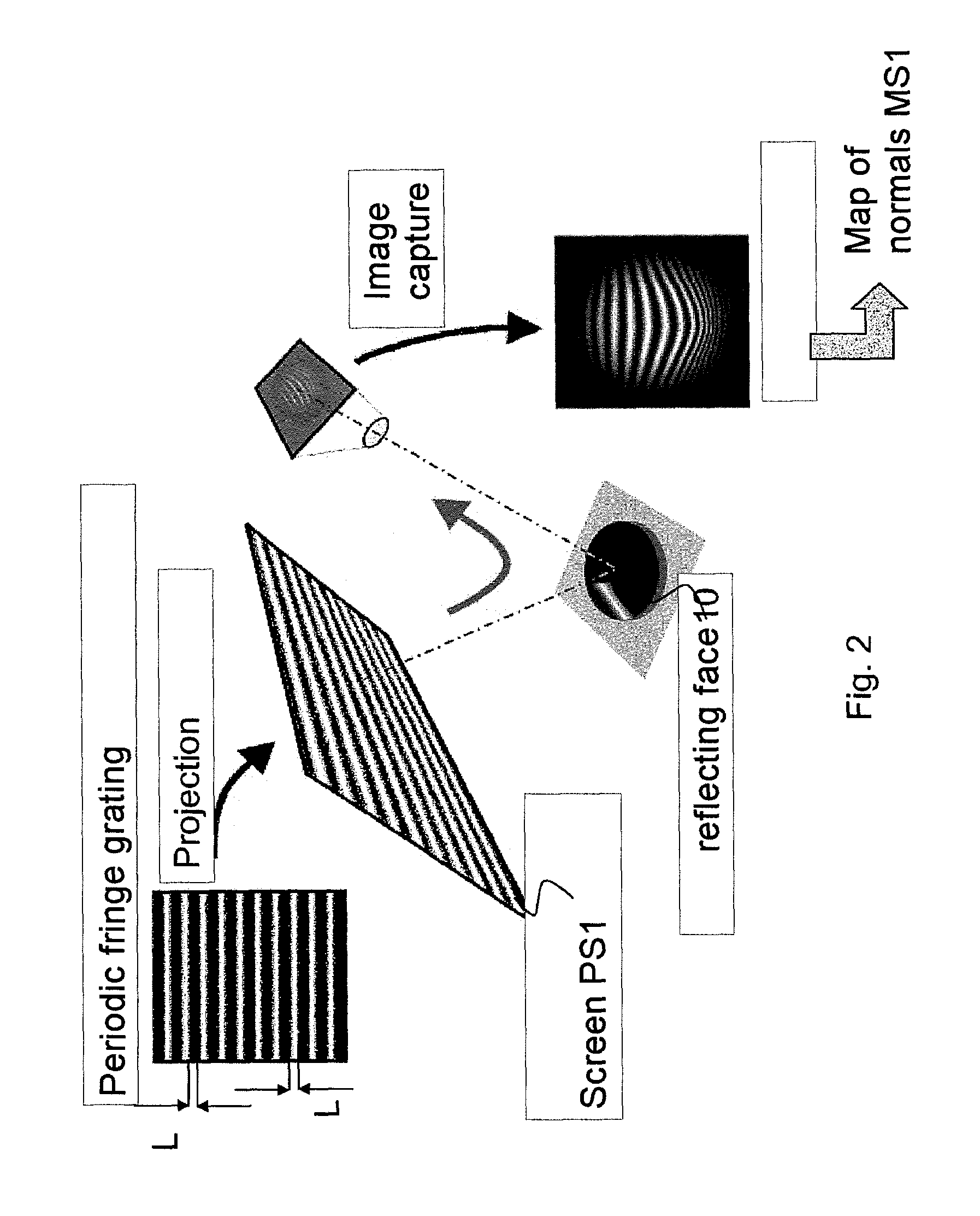Method and tool for measuring the geometric structure of an optical component
a technology of geometric structure and optical component, applied in the direction of geometric properties/aberration measurement, structural/machine measurement, instruments, etc., can solve the problems of significant duration of a face measurement, inability to accurately position the measurement of the first face with respect to the second face, and inability to accurately reconstruct the geometric structure. , to achieve the effect of excellent precision
- Summary
- Abstract
- Description
- Claims
- Application Information
AI Technical Summary
Benefits of technology
Problems solved by technology
Method used
Image
Examples
first embodiment
[0040]In a first embodiment, the first face 10 is illuminated by a fringe grating and the extent of this grating is greater than the size of the first face 10. Thus the zonal measurement makes it possible to measure the entirety of the face 10 in a single, fast and simple step.
[0041]Advantageously, the zonal measurement can be obtained by a collection of elementary zonal measurements carried out for example with a fringe grating as described above, illuminating only a fraction of the first surface that will be dubbed the “elementary zone”. The elementary zonal measurement measures the signal arising from the reflection of the fringe grating by the elementary zone. The elementary zonal measurements are repeated until the elementary zones cover the whole of the first face. The zonal measurement is obtained by joining up the various elementary zonal measurements.
second embodiment
[0042]An example of this second embodiment for a zonal measurement carried out on the basis of two elementary zonal measurements can be described as follows: the first face 10 is illuminated by a fringe grating whose extent is less than the total surface of the first face 10. Let us consider for example that the fringe grating covers 60% of the surface of the first face 10. A first elementary zonal measurement is carried out as indicated hereinabove on a first elementary zone Z1 corresponding to the 60% of the first face covered by the grating for a first position of the first face with respect to the grating. To measure the whole of the first face 10, said first face 10 is thereafter displaced with respect to the grating so that the latter is projected onto another portion of the face 10 and covers a second elementary zone Z2, for example a zone still covering 60% of the surface of the first face, but where the elementary zones Z1 and Z2 overlap over an area corresponding to 20% of...
PUM
 Login to View More
Login to View More Abstract
Description
Claims
Application Information
 Login to View More
Login to View More - R&D
- Intellectual Property
- Life Sciences
- Materials
- Tech Scout
- Unparalleled Data Quality
- Higher Quality Content
- 60% Fewer Hallucinations
Browse by: Latest US Patents, China's latest patents, Technical Efficacy Thesaurus, Application Domain, Technology Topic, Popular Technical Reports.
© 2025 PatSnap. All rights reserved.Legal|Privacy policy|Modern Slavery Act Transparency Statement|Sitemap|About US| Contact US: help@patsnap.com



